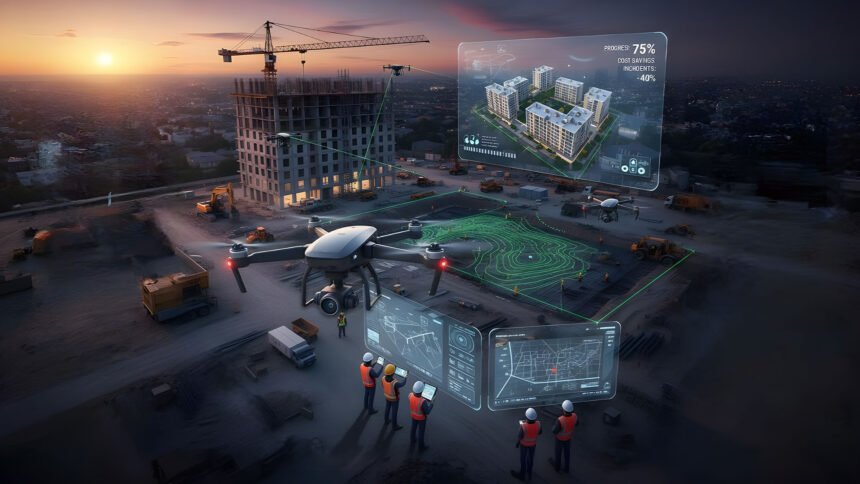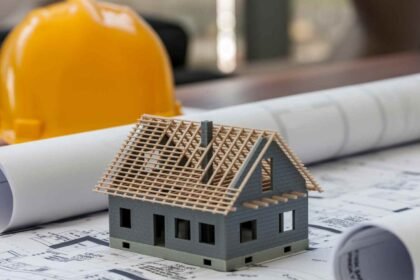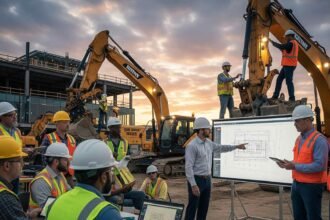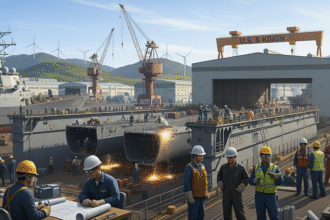Drones are no longer just cool flying machines used for aerial videos. They’ve become an essential part of the modern construction scene. All over the world, builders, engineers, and developers are turning to construction drones for surveying, planning, inspection, and project management. These small devices are helping companies save time, cut costs, improve safety, and boost productivity, all while offering clearer insights from above.
Smarter Planning with Drone Mapping
Every construction project starts with one critical step: understanding the land. Before a single brick is laid, teams need to know every inch of the terrain, its slopes, boundaries, and surface conditions. In the past, this required professional surveyors spending days collecting data manually.
Today, drone mapping makes this job faster and far more accurate. A single drone flight can capture hundreds of high-resolution photos, which are then processed into 3D maps or terrain models. These detailed visuals help architects and engineers design foundations, drainage systems, and access roads more efficiently. With drone data, companies can identify land irregularities early and avoid delays down the road. The result is better pre-construction planning and smarter use of resources.
Clearer Oversight Through Construction Site Monitoring
Keeping track of progress across large construction projects has always been difficult. Traditionally, managers had to rely on regular walk-throughs and paper reports. Now, construction site monitoring with drones allows managers to see the entire site in minutes. With just a few scheduled drone flights, companies can collect real-time images showing how far the project has come, without stepping away from their desks.
This technology also makes teamwork smoother. Drone footage can be shared instantly with clients, investors, and subcontractors, keeping everyone informed and aligned. Any issue, such as a delayed section or design mismatch, can be spotted and resolved early. That means fewer communication gaps and far fewer project delays.
Making Construction Work Safer and Easier
Construction is one of the most dangerous industries in the world, but drone technology in construction is changing that. Many tasks that once put workers at risk, like roof inspections, bridge checks, or tall-structure surveys, can now be done safely using drones. High-resolution cameras provide detailed visuals of hard-to-reach areas, eliminating the need for ladders, scaffolding, or cranes.
Drones can also spot hazards before they cause trouble. They help detect weak points, unstable surfaces, or equipment malfunctions that might endanger workers. Having this early warning system allows project managers to act proactively and prevent accidents. For companies serious about safety, drones have quickly become an indispensable tool.
Saving Both Time and Money
Anyone who works in construction knows time equals money. Drones are helping companies save both. Jobs that once took days now take hours. For instance, a full site survey can be completed by a drone in an afternoon, with results ready the same day. This means projects start faster and stay on track.
Drones also help reduce rework, one of the biggest cost drains in construction. Aerial inspections reveal alignment issues or material waste long before they become expensive mistakes. Some companies use drones to manage inventory and monitor deliveries, ensuring resources are used efficiently. By cutting waste, avoiding delays, and improving accuracy, drones consistently produce a high return on investment.
Data-Driven Decision-Making
Drones don’t just capture images; they collect valuable data. Many modern construction drones are equipped with special sensors like LiDAR and thermal cameras. These tools can generate topographic maps, measure ground levels, or identify moisture buildup inside walls. This kind of information helps engineers make quick, informed decisions based on real evidence rather than assumptions.
When drone data is integrated into project management systems or building models, it improves collaboration between departments. Architects, planners, and contractors can all access the same updated visuals, ensuring everyone works with consistent information. This level of transparency makes projects more efficient from start to finish.
Promoting Eco-Friendly and Compliant Building Practices
Sustainability is now at the heart of modern construction. Drones play a key role in supporting eco-friendly building operations. They help monitor land use, reduce unnecessary excavation, and track how much vegetation or soil is affected by the project. Drone mapping can detect areas at risk of erosion or flooding, allowing teams to make environmentally responsible adjustments.
In addition, drones make compliance and reporting much easier. Their images act as time-stamped evidence for safety and regulatory audits. If there’s ever a dispute about environmental damage or construction progress, drone footage offers clear, reliable documentation.
The Growing Role of Drones in Construction Projects
From skyscrapers and roads to housing developments and energy plants, drone technology in construction is being used everywhere. Large firms rely on fleets of drones for land surveying, logistics planning, and structural inspection. Smaller companies use them to document progress, create promotional videos, and give clients regular updates.
Surveys in the U.S. show that companies using drones report fewer on-site issues, faster turnaround times, and greater client satisfaction. Even small contractors are finding that drones give them a competitive advantage, letting them deliver professional assessments and data without large budgets or teams.
The Future of Construction Drones
As technology continues to evolve, the potential for drones in construction keeps growing. New models are lighter, faster, and capable of collecting even more detailed data. In the near future, drones may automatically perform site checks, analyze footage, and report any problems directly to project managers in real time.
Far from replacing humans, drones are enhancing how people work. They handle tedious, risky, and time-consuming tasks while allowing professionals to focus on creativity, problem-solving, and precision. For the construction world, drones are not just tools; they’re partners in building a safer, faster, and smarter future.









